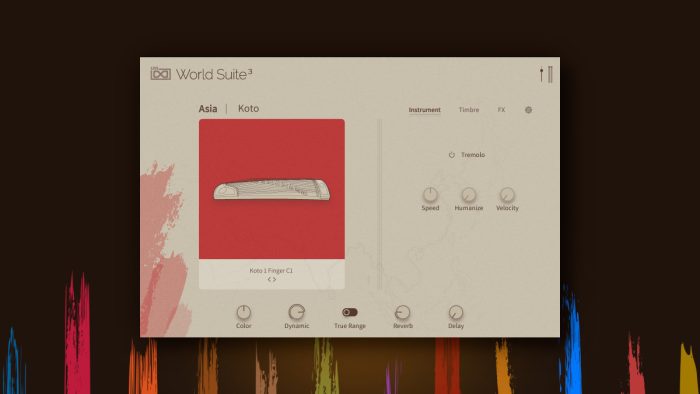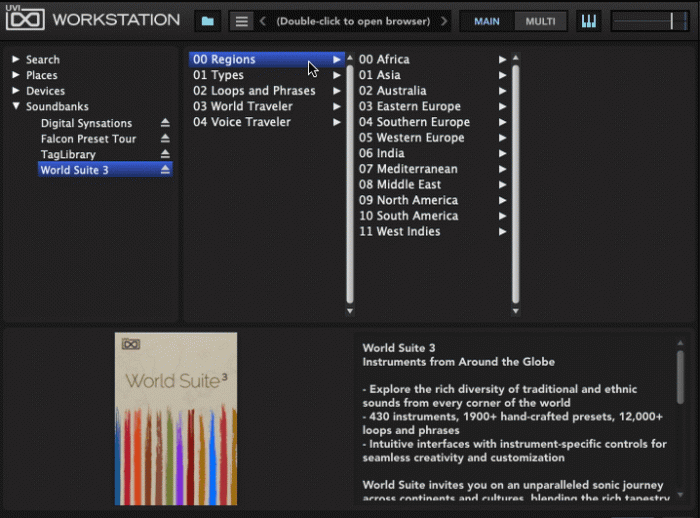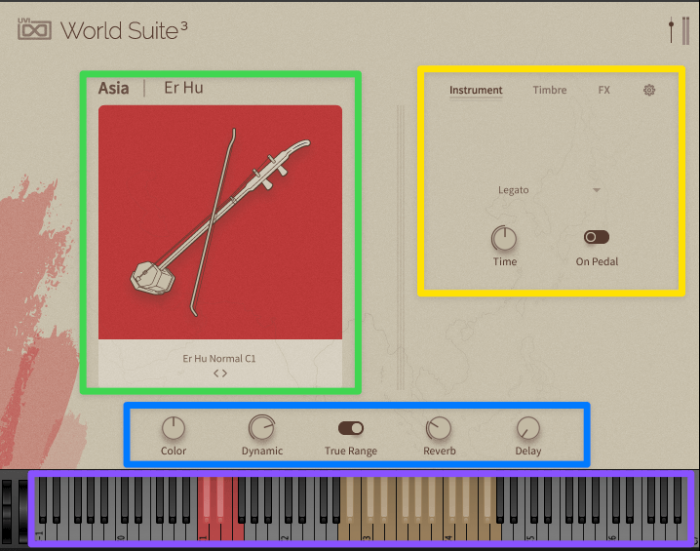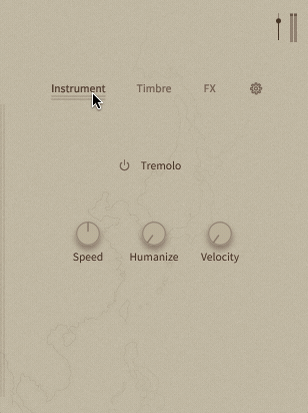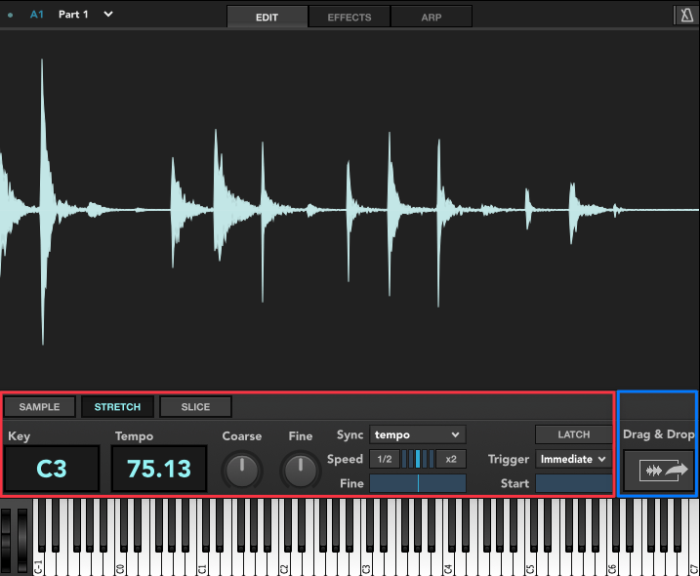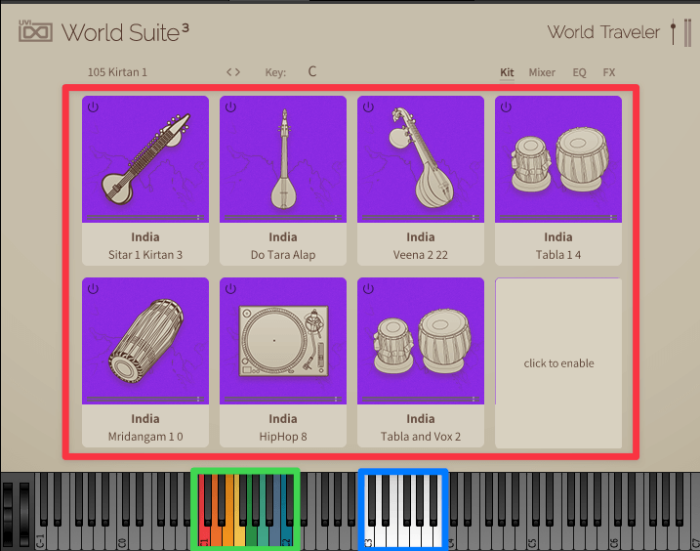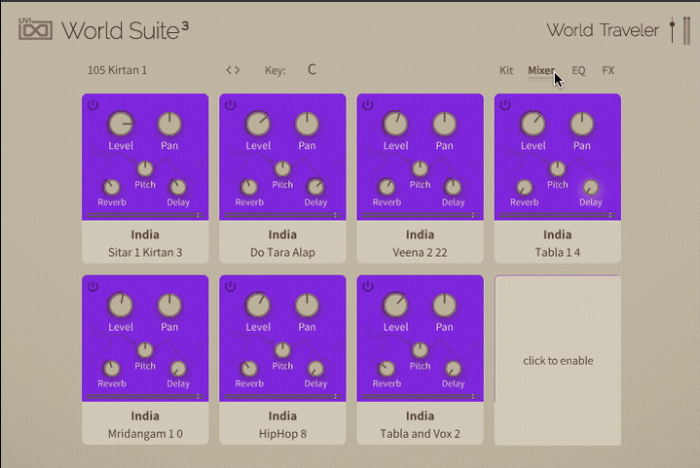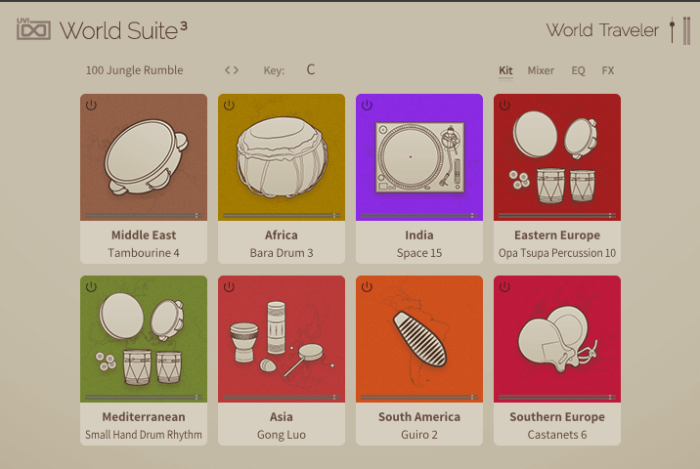NoiseQuest’s Josh Turvey takes a look at the latest version of UVI’s virtual instrument collection which explores the rich diversity of traditional and ethnic sounds from every corner of the world.
Summary
Weighing in at 36 GB, World Suite 3 is a colossal, virtual-instrument library that covers a truly mind-blowing range of traditional, ancient, and ethnically diverse instruments, vocals, phrases, and loops.
The quality of the sampled content is superb, creating a truly immersive experience that can be used across a range of genres and applications: from Film and Game Scoring, to Orchestration and Music Production.
Pros:
- One of the most complete and comprehensive world-instrument libraries available, especially at this price point ($299).
- Multiple, inspiring ways to work with the sampled material included in the suite.
- The ‘Traveler’ series is an excellent way to get more familiar with the library’s potential and to quickly develop ideas.
- The minimalist interface is intuitive and user-friendly.
- Thoughtful implementation of key-switching, articulations and effects.
Cons:
- Some multi-sample libraries aren’t as deeply sampled as other high-end, competitor products. Given the sheer scale of the suite, this is an understandable consequence of such an ambitious project.
- Undesirable pitching artefacts can sometimes occur in the two ‘Traveler’ libraries when moving away from the original pitch of the sampled material. Deeper control over the time-stretching algorithm inside the UVI Workstation would be a welcome addition.
Intro
The release of ‘World Suite’ in late 2016 marked a natural evolution for UVI. Until then, the critically acclaimed developer had primarily directed their expertise towards the creation of premium virtual libraries for synths, keys, sound effects, and orchestral instruments. By focussing exclusively on traditional, ethnic and world-instruments, ‘World Suite’ immediately expanded UVI’s catalogue. This signalled their intent to widen their market reach, further cementing their status as a premium, all-round solution within the fiercely competitive field of virtual-instrument development.
Now in its third incarnation, ‘World Suite 3’ has steadily grown in stature for the better part of a decade, and it is more expansive and refined than ever before. Providing “80,000 samples through 430 meticulously recorded instruments, 1,900+ hand-crafted presets, and 12,000+ loops and phrases from every corner of the globe”, the scope of the suite is truly staggering. Boasting an incredible assortment of sampled material, World Suite 3 promises to be “a source of inspiration, sparking your creativity with authentic, deeply immersive sounds that let you craft with unrivalled authenticity and depth”. Below we explore how it lives up to, and exceeds, this description.
Please note that as a virtual-instrument library, World Suite 3 requires either UVI’s ‘Falcon 3’ or the free, ‘UVI Workstation’ to run. This review will focus on the latter option because it is more readily available for the majority of users. Owners of ‘Falcon 3’ will have access to deeper functionality not mentioned in this review.
Design & Features
Due to the sheer size and scale of the suite, UVI has conveniently divided it into four libraries so that the user can interact with the sampled material in multiple ways, depending on their use-case and preferred workflow. These libraries are:
- Multi-Sampled Instruments
- Loops and Phrases
- World Traveler
- Voice Traveler
For ease of navigation, the four libraries have been organised into five, main categories, all of which can be accessed via the browser (see GIF above). As expected, each library is unique, both in terms of design and functionality. These differences will be discussed below, but it is worth highlighting that all the libraries feature a playfully minimal aesthetic that is clear and simple to understand.
Of the four libraries, the individual, ‘Multi-Sampled Instruments’ provide the most sonic flexibility because the user has maximum control over the behaviour of the instrument. The three remaining libraries (‘Loops and Phrases’, ‘World Traveler’ and ‘Voice Traveler’) are all loop-based, providing novel and innovative ways to use the extensive library of loops and phrases featured in World Suite 3.
Multi-Sampled Instruments
Upon selecting one of the ‘Multi-Sampled Instruments’ from the browser (found in the ‘Regions’ and ‘Types’ categories shown in the previous GIF), the user is presented with an interface that can be divided into four, main sections (see image below).
An illustrated graphic of the instrument features prominently on the left (green box), which also contains a menu that manually scrolls through the various key-switch articulations.
Macros occupy the centre of the interface (blue box), whilst the right panel (yellow box) is dedicated to deep controls and instrument settings that impact the overall behaviour of the instrument. The bottom of the interface features a keyboard layout (purple box), which helps the user identify the range of the sampled instrument.
The Macros (see GIF above) are hardwired to five parameters: ‘Colour’ alters the instrument’s timbral character; ‘Dynamic’ adjusts the amplitude velocity amount; ‘True Range’ affects the MIDI keyboard behaviour; and two effects sends (‘Reverb’ and ‘Delay’) feed into the effects section.
The ‘True Range’ switch is the star of the show here, and it strongly influences the behaviour of the instrument. When engaged, only the instrument’s natural range (brown keys in the GIF above) will be triggered by the MIDI keyboard, thus representing the most authentic expression of the instrument.
Additionally, engaging ‘True Range’ will enable the user to trigger different instrument articulations in realtime, via the dedicated key-switches (red keys in the GIF above). This effortlessly adds depth and realism to the performance, which can sound remarkably expressive.
Turning ‘True Range’ off will map the samples across the full range of the MIDI keyboard. This pushes the sonic possibilities beyond the capabilities of the original instrument. Whilst the realism of the performance suffers when moving beyond the instrument’s natural octave range, disabling ‘True Range’ creates ample opportunity for sound design and experimentation, which is definitely worth exploring.
Users wanting deeper control can turn to the four-page panel on the right of the interface (see GIF above). These pages (Instrument, Timbre, FX, and Settings) contribute to the overall behaviour of the preset. The ‘Instrument’ page is unique and offers instrument-specific settings that are dependent on the selected preset. It should be noted that this page isn’t available on some instruments.
‘Timbre’ contains the Amplitude Envelope and two Modulators in the shape of Low Frequency Oscillators (LFOs). Potentiometers controlling the instrument’s Gain, Pan, and Pitch are also found in this window; these can receive modulation from the Modwheel and the LFOs, which provides a greater depth of dynamic control over the instrument.
The ‘FX’ page contains the settings for the ‘Reverb’ and ‘Delay’ sends discussed earlier in the ‘Macros’ section. This page also features a simple, three-band EQ to sculpt the overall frequency curve of the instrument. Finally, the ‘Settings’ tab controls the Polyphony, Pitch Bend range and MIDI Response curve. Users can also determine whether they want the ‘Velocity’ or ‘Modwheel’ to affect the dynamic expression of the instrument.
The ‘Multi-Sampled Instrument’ libraries are aimed at producers and composers looking for maximum control over the sampled material. Users can freely compose rhythmic, melodic and harmonic phrases from scratch, whilst effortlessly switching between articulations in realtime for maximum realism and authenticity. Although some instruments are not as deeply sampled as others within the suite, the creative potential on offer is impossible to overstate.
Loops and Phrases
World Suite 3 features an enormous library of ready-made loops, which have been performed by world-class musicians who are specialists in their field. The Percussive, Melodic, Harmonic and Vocal samples are expertly curated and have been designed for immediate use, which makes working with them a breeze.
The ‘Loops and Phrases’ are located in the browser and can be loaded directly inside UVI Workstation (see image above), which offers basic controls to manipulate the sample, such as: Re-pitching, Stretching and Slicing (red box). Alternatively, the samples can be dragged and dropped (blue box) directly into the user’s Digital Audio Workstation (DAW), or Audio Editor, for further processing and re-sampling.
When left in their natural state, these samples are extremely useful for injecting authenticity into one’s productions. Additionally, the ease with which samples can be extracted from the library encourages deep experimentation, which will likely appeal to more adventurous users. This library will no doubt serve composers in film and media, but it also caters to beat-makers and live-performance DJs looking to diversify their collection of sampled material.
World Traveler
‘World Traveler’ is likely best understood as being an advanced construction kit. The aim is to provide the user with quick access to World Suite 3’s vast library of loops (discussed in the previous section) so that they can be combined and implemented in unique and interesting ways.
Known as the ‘Kit’, this library’s main page (see image above) features eight loop slots (red box), which can each contain one loop. Although the factory presets group regions together, users can mix and match the loops as they please, simply by clicking on the instrument names in the loop slots and selecting from the pop-up menu. Note that the vocal loops are not available for selection as they have a dedicated construction kit (‘Voice Traveler’), which is discussed below.
The loop slots can be triggered individually by pressing one of the eight, coloured keys (green box), with the regular keys (blue box) triggering all active loops slots simultaneously and re-pitching them to match the corresponding note on the keyboard.
Navigating away from the ‘Kit’ page, ‘World Traveler’ is also equipped with a ‘Mixer’, an ‘EQ’, and an ‘FX’ page, which features three effects (see GIF above).
The ‘Mixer’ features quick controls for each individual slot, namely: Level, Pan and Pitch. Two send controls for the ‘Reverb’ and ‘Delay’ effects are also found here. The ‘EQ’ page offers a three band EQ for each slot, whilst the ‘FX’ page provides deeper control for the ‘Reverb’ and ‘Delay’ sends, as well as a three-band EQ that sculpts the overall sound of the ‘Kit’.
‘World Traveler’ has fantastic potential for experimentation. The ease with which loops and phrases from different areas of the globe can be combined (see image above) leads to new avenues of sonic exploration, which can then be mixed and balanced together directly within the library. Once a user is satisfied with the combination they’ve created, they can easily bounce it to audio within their DAW, where it can be re-sampled and mangled to create richly emotive rhythms, melodies, and textures.
Voice Traveler
‘Voice Traveler’ (see image below) is similar to ‘World Traveler’, but is specifically dedicated to the vocal loops and phrases found within the suite.
The library is equipped with a ‘Drone’ slot, mapped to the brown keys (see blue boxes), with a further four ‘Voice’ slots dedicated to vocal loops, all controlled by the orange keys (see red boxes). Both sets of slots (‘Drone’ and ‘Voice’) contain controls to mix and manipulate the samples, with parameters dedicated to envelope and filtering, as well as a ‘Reverb’ send that feeds into an effects slot situated on the right of the interface (see green box).
‘Voice Traveler’ captures the essence of an inspiring workflow that is ubiquitous throughout the Film and Game Scoring industries, so it is a thoughtful addition to the suite. As with ‘World Traveler’, swapping between drone and vocal samples is as simple as clicking on the names of the relevant slots and selecting from the pop-up menu. Once again, the ability to mix loops from different regions makes it easy to create complex and evocative vocal textures that can sound deeply atmospheric when paired with the correct drone.
It should also be noted that re-pitching the vocal samples away from their original key can sometimes introduce some undesirable artefacts. Should this occur, it’s worth experimenting with the sample playback controls located on the bottom of each slot. As a final thought, increasing the number of available drone slots would help to elevate the library because it would allow for greater sonic potential. Whilst the drones provide a solid compositional foundation, they often need to be supplemented by additional layers within the DAW to create more emotive depth.
In Use
World Suite 3 is a veritable, treasure trove of sampled material that caters to multiple use-cases and workflows. Users wanting maximum control will be drawn to the ‘Multi-Sampled Instrument’ libraries, whilst those searching for a quick solution will likely gravitate to the ‘Loops and Phrases’, or the two ‘Traveler’ libraries. No matter one’s preference, the opportunity for experimentation is always within reach, so it is worth scratching beneath the surface of each library to search for capabilities that extend beyond the intended use-case.
True to UVI’s reputation, the entire suite features excellent scripting and optimisation. Loading times are minimal when switching between instruments, and the bloat sometimes associated with libraries of this size is notably absent. This culminates in a streamlined experience that is both engaging and richly rewarding.
Finally, it should be noted that UVI Workstation makes it possible to use the engine as a multi-output device (see GIF above). Users can therefore layer multiple, World Suite 3 libraries within one instance of UVI Workstation. These can then be mixed, before being routed out of UVI Workstation and into individual channels within the user’s DAW for further processing. Ultimately, this helps to keep CPU usage to a minimum, which is a thoughtful workflow enhancement for users who prefer to work with MIDI throughout the production process.
Conclusion
World Suite 3 is a truly immersive library that pays homage to humanity’s rich, global, and historical, musical heritage. The quality across the whole collection is outstanding; the scope and scale of which has the capability to transport the user to distant lands and epochs.
The blend of multi-sampled instruments, loops and loop-based libraries is inspired, and it ensures that producers from multiple fields can extract value from the suite, which effortlessly blends and adapts to the user’s preferred workflow.
World Suite 3 is an incredible achievement that is likely to add immense value to the arsenal of any producer looking to diversify their sonic palette. It caters to virtually any composition and production task imaginable, and is an excellent testament to UVI’s commitment to quality and excellence.
Technical Info
- Simple download and installation process via the UVI Portal. Users can manage their disk space by setting their preferred location for the library, which is found in the preferences of the UVI Portal. Note that a free iLok account is required to activate the library.
- World Suite 3 runs as an instrument library in UVI’s flagship ‘Falcon 3’ or the free, ‘UVI Workstation’.
- Comprehensive documentation is provided for Falcon 3, UVI Workstation and World Suite 3. The manuals can be found inside the UVI Portal, in the ‘Technical Specifications’ section of each product.
- Mac & PC are both supported, with options for VST, VST3, AU and AAX and Standalone.
- World Suite 3 is a sizeable library, requiring 36 GB of disk space.
- CPU usage is well optimised, but is hugely dependent on the number of instances loaded into the product. This can be curtailed by using the multi-outs provided in Falcon 3 and UVI Workstation.
Alternatives
- EastWest Sounds: Industry-leading sample libraries.
- Best Service: Provides multiple, world-instrument libraries sampled by industry titan, Eduardo Tarilonte.
- SoundMagic: Specialising in Asian instruments, SoundMagic uses Hybrid Modelling Technology to create their virtual instruments. This is a combination of sampling and physical modelling.
- Impact Soundworks: Large collection of deeply sampled, individual instruments.
- Soniccouture: Deeply expressive individual libraries.
- Evolution Series: Fantastic selection of world libraries.
- Strezov Sampling: Multiple, high-quality virtual instruments.
Check out the UVI website for more information on World Suite 3, which is currently available to purchase at a 30% discount as part of a Black Friday promotion until December 8th.

